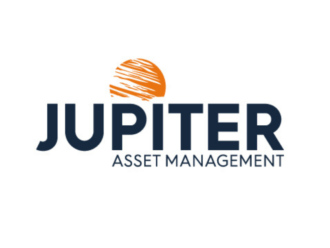Jon Wallace manages the Jupiter Ecology Fund
How the pace of action to halt climate change must step up dramatically and the challenges and investment opportunities that may result.
The European Union’s ‘Fit for 55’ climate strategy shows how all-encompassing and unprecedented the effort to curb climate change will be. Targeting a 55% reduction in annual carbon emissions by the end of the decade compared with 1990, implies the strategy aims to cut emissions by around a third by 2030.
It is important to remember that this rep- resents the minimum required to avoid dangerous levels of climate change that would undermine global development on all fronts. It will be almost impossible to tackle poverty, inequality or to improve standards of healthcare provision and ed- ucation if we do not also make rapid pro- gress to avoid further damage to the envi- ronment on which we all depend.
This underpins a growing consensus – consumers, voters, politicians, regulators and some executives – for action. In terms of scale, the proportion of global GDP covered by national-level net-zero targets amount to two-thirds of global GDP, including commitments from China, the US, Japan and South Korea. It also covers more than 61% of global emissions and 56% of the world’s population.
Compelling opportunity
This unprecedented challenge also represents a compelling investment opportunity – providing capital to the companies that can enable the transition to net-zero carbon emissions. These are companies focused on providing the critical products and services to help businesses deliver on their emissions targets. We believe these environmental solutions companies over time will offer long-term outperformance as their markets expand rapidly.
A growing stream of opportunity for these companies stems from ever-more sophis- ticated corporate net-zero ambitions. Just over a fifth of the Forbes Global 2000, or 417 companies, generating annual sales of about $14trn (£10.1trn), have made a commitment to net-zero emissions, most before 2050.
Companies aiming to meet net zero tar- gets will require a whole ‘lifecycle’ approach, including tackling upstream emissions (from suppliers) as well as downstream emissions that capture the all-important emissions from a product’s ‘use phase’. Furthermore, many of these opportunities are in industries that have so far seen limited progress when com- pared to those that are already making strides, such as the energy and automo- tive sectors.
This will take time. Supply chain decar- bonisation is picking up pace but is not commonplace and is distinctly challenging.
Steady stream
Many emission-reduction measures are also expensive and difficult for companies operating in relatively commoditised spaces with slim margins and few oppor- tunities for differentiation.
Nevertheless, we are starting to see a steady stream of opportunities emerge. This can be in pockets of the market where a small increase in raw material prices is manageable, such as when a fast- moving consumer goods company can substitute carbon-intensive ingredients. This provides potential opportunities for ingredients companies in the chemical sector, which can dramatically benefit from margin uplift if they have a differentiating product that can help in the transition to net zero.
There is a Norwegian company that pro- duces synthetic vanilla flavouring from sustainable wood-based materials as an alternative to petroleum-based vanilla fla- vourings that is the food industry norm. The wood-based product offers carbon reduction on a life-cycle basis of about 90% versus the oil-based ingredient. This category is growing by more than 10% a year compared to the 1% per year growth of oil-based synthetic vanilla.
In summary, net zero carbon ambitions will absolutely require environmental solutions, and we will need more solutions spread widely across sectors. Companies that make or have exposure to these products and services will have a heightened profile, reflecting the urgency of climate mitigation plans. We believe these are long-term opportunities, and they are not just limited to higher profile solutions such as electric vehicles or clean energy. We expect to see environmental solutions with a wider array of potential exposures, including markets and sectors that are under penetrated. We also expect to see continued growth in the depth and diversity of the opportunity set, and this will provide a healthy stock picking environment into the long term.





